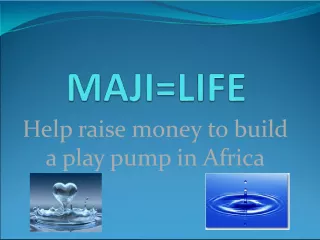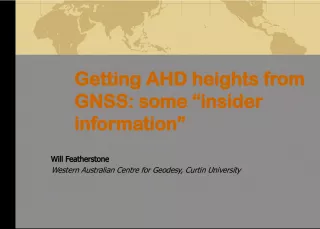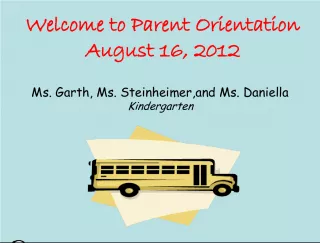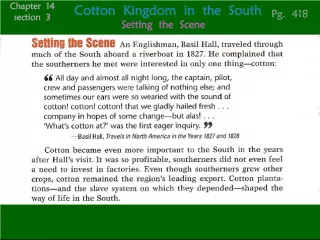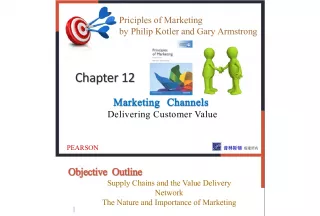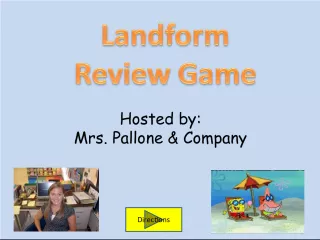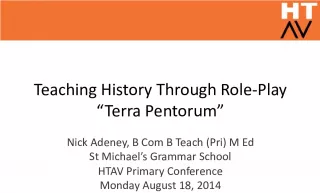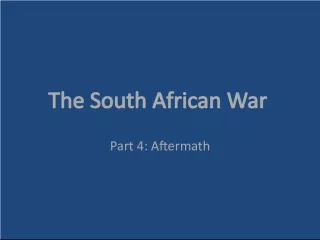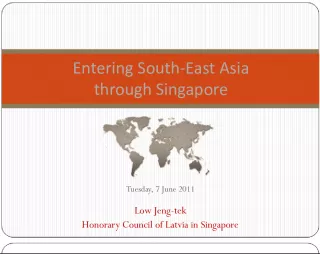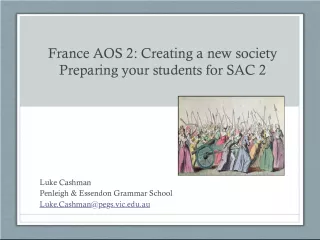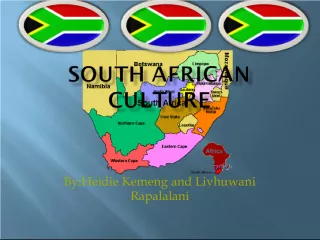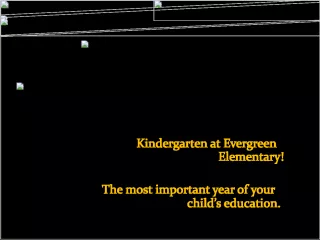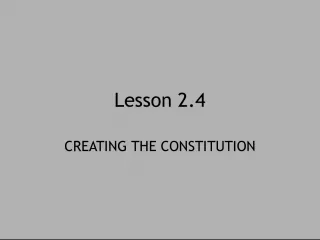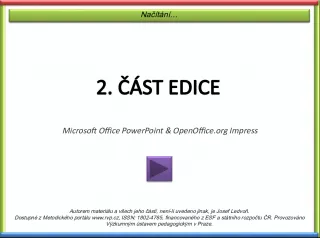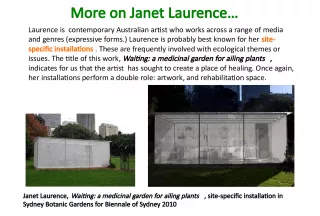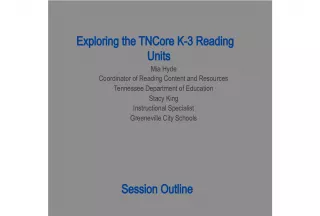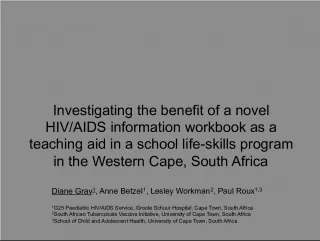Creating Intersubjectivity in Sociodramatic Play at a South Australian Kindergarten
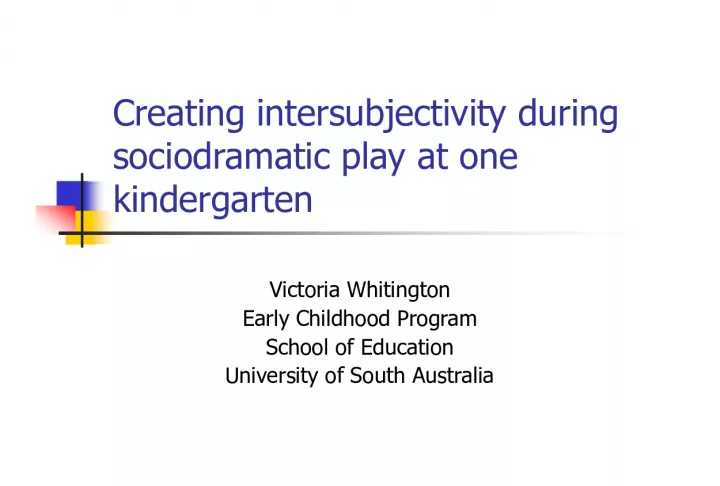

This presentation outlines an investigation of 4-year-old children's creation of intersubjectivity in sociodramatic play at one South Australian kindergarten. It aims to develop early childhood educators' knowledge about the ways in which children create shared meaning in play.
- Uploaded on | 1 Views
-
 ainafurunes
ainafurunes
About Creating Intersubjectivity in Sociodramatic Play at a South Australian Kindergarten
PowerPoint presentation about 'Creating Intersubjectivity in Sociodramatic Play at a South Australian Kindergarten'. This presentation describes the topic on This presentation outlines an investigation of 4-year-old children's creation of intersubjectivity in sociodramatic play at one South Australian kindergarten. It aims to develop early childhood educators' knowledge about the ways in which children create shared meaning in play.. The key topics included in this slideshow are intersubjectivity, sociodramatic play, early childhood education, shared meaning, South Australian kindergarten,. Download this presentation absolutely free.
Presentation Transcript
1. Creating intersubjectivity during sociodramatic play at one kindergarten Victoria Whitington Early Childhood Program School of Education University of South Australia
2. Purpose of presentation: to outline an investigation of 4 year old childrens creation of intersubjectivity in socio-dramatic play at one South Australian kindergarten. (conducted as part of an undergraduate honours 2004-5 degree) to develop early childhood educators knowledge about the ways in which children at one South Australian kindergarten created shared meaning in play.
3. Context A kindergarten in a southern beach suburb of Adelaide. Families are mostly Anglo-Australian, middle to low income, and live in single houses on small blocks of land which often they are buying over most of their working lives. Single parent families often live in rented accommodation.
4. Research questions Do four year old children at one South Australian Kindergarten create intersubjectivity in their sociodramatic play? If so, by what play acts?
5. Participants 4 year old children who had attended a minimum of 22 weeks at Kindergarten - average age: 4 years and 5 months 28 children - 14 girls and 14 boys Anglo-Australian children with parental permission who elected to play in a specially sectioned off area of the preschool building.
6. Theoretical framework: Socio-cultural The overarching idea about human development of the socio-cultural-historical perspective is: Humans develop through their changing participation in the sociocultural activities of their communities, which also change (Rogoff, 2003, p. 11) Social play is conceptualized as an intersubjective activity (Rogoff 1990; Rommetveit, 1979; Trevarthan, 1979), with frequencies for intersubjective interactions increasing with childrens age.
7. Theoretical framework: Socio-cultural Sociocultural theory contends that sociodramatic play fosters childrens development, thus this research comes from a particular curriculum perspective. Sociocultural theory sees human activity as context and culture-specific. Using this theoretical framework, play is not free but rather is itself a context tied to a broader societal/ cultural milieu (Tobin, Wu & Davidson, 1989). Thus, sociocultural theory is a useful framework for an investigation of play
8. Definitions: Sociodramatic play the imaginative play engaged in by children beginning around 2.5-3 years in which thought is separated from actions and objects, and children renounce impulsive actions (Berk, 1999). In sociocultural theory it is the leading developmental activity of early childhood. In play children are working in their zone of proximal development (Vygotsky, 1978) Intersubjectivity the creation of shared understanding by two or more people in interaction. Over time an expectation is developed between parties that in interaction, meaning will be co-constructed and that shared understandings will be dynamic due to continuous knowledge exchange (Rommetveit, 1985)
9. The developing capacity of children (birth to approx. 7 years) to create shared meaning with a responsive adult partner Child Adult partner age Shared responsibility Both partners contribute, with adults taking the greatest responsibility birth 7 years
10. Data collection: Videotape with mobile camera and sound recording When children entered the designated area and began to engage in socio-dramatic play the videoing commenced, and ceased when they left, or when they declared the play finished Children played in groups of two or more, all called play partners
11. The term Intersubjectivity operationalised (Goncu, 1993b, p. 188) Intersubjectivity is a continuous knowledge exchange between players It requires Meta-communication children reaching agreement on the nature of the activity Communication coordination of particular intentions through discourse Joint focus of attention that is representational in nature and affective in origin
12. Definitions relevant to coding of social play (Goncu, 1993, p 103) Social play episode a segment of a session in which children play with each other Invitation overt acts that expressed a childs desire to play with one or more partners, were interpreted as such and were answered (could be verbal or nonverbal) Turn everything that a player said and did before the other player verbally or non verbally responded. Play act dialogic units that expressed a thought or an idea to a partner Termination overt acts expressing at least one of the players desire to leave social play (could be verbal or nonverbal)
13. Categories and subcategories of play acts (adapted from Goncu 1993) Play acts are dialogic units, that express a thought or idea to a partner(s), and can be verbal or non-verbal Expansion introduction, extension, building-on, acceptance, rejection, revision and conciliation Agreement acceptance, rejection, revision, conciliation Emphasis Irrelevant Acts Observation
14. Expansion (Goncu, 1993) Introduction - introducing new elements not previously present. Extension adding new information or expectations to a partners idea, expressed in the previous turn. Building-on adding new information to ones own previously expressed idea to contribute to the ongoing shared play.
15. Agreement (Goncu, 1993) Acceptance agreement with play partner. Rejection negating a partners idea. Revision rejecting a partners idea and changing it. Conciliation attempt to resolve disagreements by a plea or by trying to find an agreeable ground to solve the conflict.
16. Emphasis (Goncu, 1993) Repeating to self with the purpose of getting the partners attention to an activity of interest to the child (shows failure to take into account their partners viewpoint).
17. Irrelevant Acts (Goncu, 1993) Act has no relevance to the partners or own previously expressed play idea and the point of reference is something other than play.
18. Observation Child observes play enactments for a length of time prior to choosing to either enter the play episode or remain apart.
19. Coding example for identification of intersubjectivity At this point in play within a doctors surgery there had been a role swap. Grace, the new patient, was lying across the chair. Wendy, the receptionist, announced And Im gonna sit here (M-meta-communication) and sat at the reception desk. Wendy called from reception Now, Grace, whats broken today? (C-communication). Grace with a big grin, pointed to her leg, and stated My leg. (JF-joint focus)
20. Findings: Research question 1 In their socio-dramatic play children were found to create intersubjectivity some of the time (consistent with Farver 1992, and Goncu 1993b). Total # of turns found to intersubjective as a percentage of total turns: 30.2%.
21. Findings Research question 2 Play acts by which children created intersubjectivity in their sociodramatic play: Consistent with Goncu, 1993a the most frequent play acts were: -extensions (32.1%) - build-ons (13.3%), - acceptances (12.8%) - introductions (12.4%) And least frequent, rejections (8.4%), revisions (6.2%), observations (5.6%), conciliations (3%), emphasis (4.5%), irrelevant act (1.7%)
22. Table 1:Duration of play and frequencies for joint focus and play episode Play duration (mins) Joint focus Doctors, nurses & broken legs 45 70 Doctors & babies 23 34 Pet dog 13 21 Doctors busy surgery 12 22 Waking up 11 20 Jewellery & treasure 10 25 Bombs 10 22 Doctors busy surgery 9 22 Tigers 7 25 Crocodile hunter 7 14 Princess Jasmine & Aladdin 7 6 Pet shop 5 14 Superheroes 2 5
23. Findings categories and subcategories of play acts Play acts Raw Score Percentage Expansion Introductions 74 12.44 Extensions 191 32.1 * Build ons 79 13.28 Agreement Acceptances 76 12.77 Rejections 50 8.40 Revisions 37 6.22 Conciliations 18 3.03 Emphasis 27 4.54 Irrelevant act 10 1.68 Observation 33 5.55
24. Discussion By its nature, socio-dramatic play necessitates the creation of shared meaning between parties. In this study children managed to sustain play with only 30% of turns rated as intersubjective. This finding indicates that these 4 year old children are in the process of learning to develop shared meaning. Approximately 70% of turns were not rated as intersubjective. That is, the conditions of meta-communication , communication and joint focus were not satisfied. The finding that the play acts in this study with the highest frequencies were extensions, build ons, acceptances and introductions, and lower frequencies for rejections, revisions, observation, emphases, conciliations and irrelevant act shows that children had balanced skills to contribute positively in social play, and were developing perspective-taking capacity.
25. Examples of play acts where intersubjectivity was identified Extension Wendy leant over and watched Brenda closely, and asked pointing to the letters h, e, and i on Brendas page Can I just have a look at that word? `Cause I dont know how to spell it...okay? Brenda stated casually Its haitches. Wendy watched, concentrating for a moment before returning to her paper and writing the first letter. Wendy looked at the letters and began to copy them.
26. Examples of play acts where intersubjectivity was identified Introduction Paul with his finger pointed at Craig, stated, You can be Robin. Blake endorsed the role as he pointed to Craig and stated You can be Robin and I can be Batman and... Paul cut Blake off stating brightly Ill be Superman as he looked at Blake. Blake recognised Pauls need to be Superman and confirmed both roles saying to Paul Youll be Superman and Ill be Batman.
27. Examples of play acts where intersubjectivity was identified Build-on Josh leaps on to the lounge chair, taking the frozen stance of Steve Irwin, crocodile hunter. He says in a deep voice much like Steve Irwins, Crikey! and focuses on James, the crocodile. The crocodile watches the hunter, and leaps to the lounge chair, rolling on to his back, looking directly into the hunters face. The hunter grasps the crocodile by the lower neck and moves him from side to side. The hunter then puts a finger close to the crocodiles mouth and pretends to give him food, saying Eat your food, releases him, then resumes the Irwin stance. The crocodile rolls his eyes and says in a painful voice, That was poisonous food that was in my mouth. The hunter exclaims, Crocs dead!
28. Examples of play acts where intersubjectivity was identified Acceptance Steve and Trevor had a table draped with blankets to make a fort. Paul, began to remove the blankets as he constructed a tent. Steve protested He-ey! as Paul took a blanket from the fort. Paul replied Im making a tent for us. Seated in the fort, Trevor and Steve shifted and looked at Pauls construction. Steve, accepting the idea, said excitedly Were making a tent instead
29. Recommendations More research is needed to establish in other contexts and with other cohorts to understand the meaning of the apparently low frequency of turns in which intersubjectivity was found. When children work to develop shared meaning with their peers they are engaged in a challenging activity. At four years children are at a developmental point in their capacity to create shared meaning with their peers. In doing this they must put meaning before objects and action, and act according to rules negotiated with play partners, thus controlling impulses. Their continued participation in socio-dramatic play in school contexts in the early childhood years provides a pathway to continue to develop these key abilities, which may have positive impact on later academic progress and adaptive behaviour. These are topics for future investigation. Adults and teachers have a role in elaborating and scaffolding play while still leaving children in control of decision-making. I hypothesis that when adults take such roles the play is extended and the percentage of play acts that are intersubjective increases. This is an area for further research
30. Thank you for your attention Any questions?
